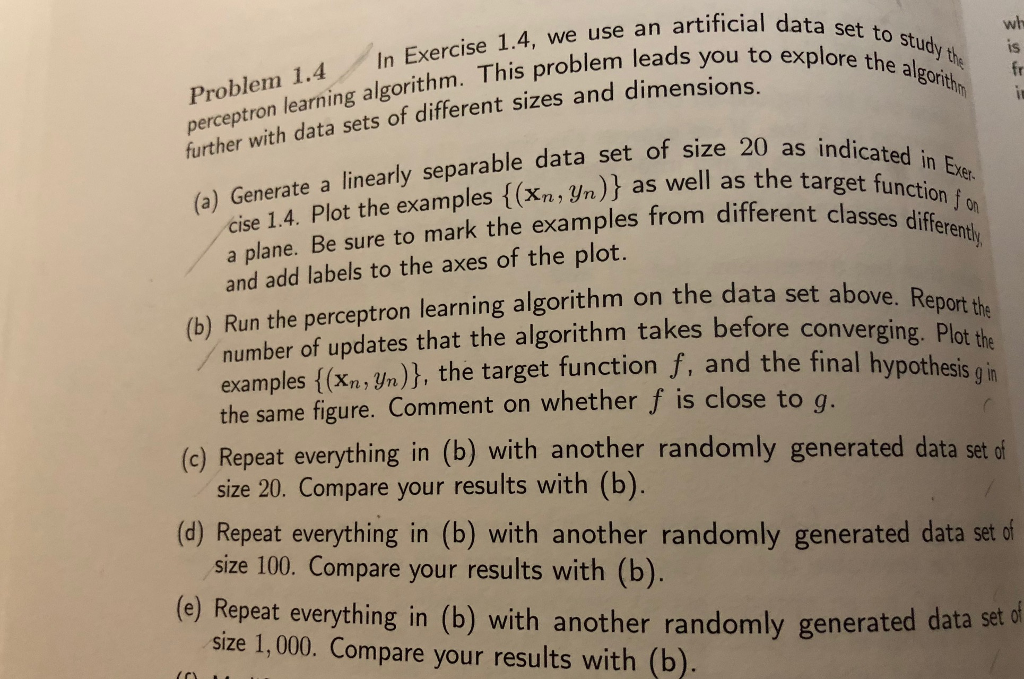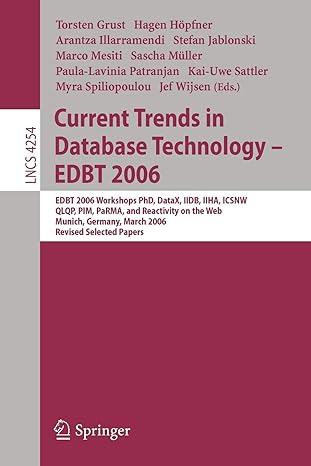Answered step by step
Verified Expert Solution
Question
1 Approved Answer
Please write code for this in Python. Problem 1.4 In Exercise u perceptron learning algorithm. This proble further wi ise 1.4, we use an artificial

Please write code for this in Python.
Problem 1.4 In Exercise u perceptron learning algorithm. This proble further wi ise 1.4, we use an artificial data sett leads you to exploetly ti wh IS fr the algorithm th data sets of different sizes and dimensions. ze 20 as indicated in Exe ated in E cise 1.4. Plot the examples (xn,Un) as well as the a plane. Be sure to mark the examples from differe and add labels to the axes of the plot. a) Generate a linearly separable data set of size 20 as tterently (b) Run the perceptron learning algorithm on the data set above. Re Report the number of updates that the algorithm takes before convergin examples [(xn,)J, the target function f, and t the same figure. Comment on whether f is close to g he final hypothesis g in (c) Repeat everything in (b) with another randomly generated data set df (d) Repeat everything in (b) with another randomly generated data set of size 20. Compare your results with (b) size 100. Compare your results with (b) size 1,000. Compare your results with (b) (e) Repeat everything in (b) with another randomly generated data seto Problem 1.4 In Exercise u perceptron learning algorithm. This proble further wi ise 1.4, we use an artificial data sett leads you to exploetly ti wh IS fr the algorithm th data sets of different sizes and dimensions. ze 20 as indicated in Exe ated in E cise 1.4. Plot the examples (xn,Un) as well as the a plane. Be sure to mark the examples from differe and add labels to the axes of the plot. a) Generate a linearly separable data set of size 20 as tterently (b) Run the perceptron learning algorithm on the data set above. Re Report the number of updates that the algorithm takes before convergin examples [(xn,)J, the target function f, and t the same figure. Comment on whether f is close to g he final hypothesis g in (c) Repeat everything in (b) with another randomly generated data set df (d) Repeat everything in (b) with another randomly generated data set of size 20. Compare your results with (b) size 100. Compare your results with (b) size 1,000. Compare your results with (b) (e) Repeat everything in (b) with another randomly generated data setoStep by Step Solution
There are 3 Steps involved in it
Step: 1

Get Instant Access to Expert-Tailored Solutions
See step-by-step solutions with expert insights and AI powered tools for academic success
Step: 2

Step: 3

Ace Your Homework with AI
Get the answers you need in no time with our AI-driven, step-by-step assistance
Get Started


